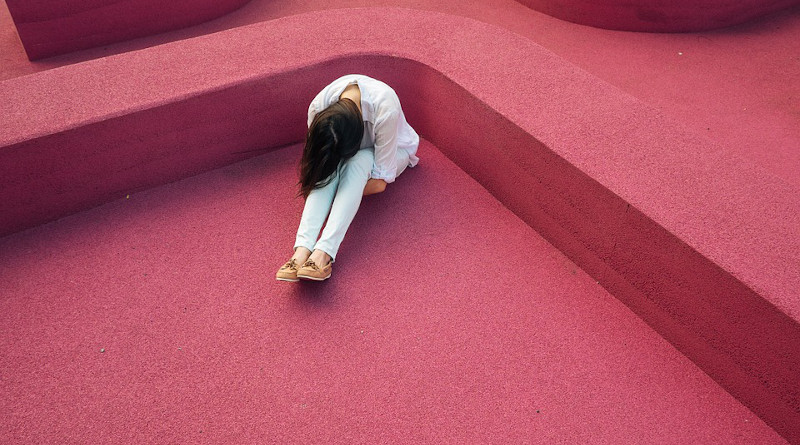Robert Reich: America’s Anxiety Disorder – OpEd
I want to talk with you about an uncomfortable topic that needs much more open discussion than it’s receiving: America’s extraordinarily high level of anxiety.
A panel of medical experts has recommended that doctors screen all patients under 65, including children and teenagers, for what the panel calls “anxiety disorders.”
Lori Pbert, a clinical psychologist and professor at the University of Massachusetts Chan Medical School, who serves on the panel, calls mental health disorders “a crisis in this country.”
Nearly 50,000 people in the U.S. lost their lives to suicide last year, according to a new provisional tally from the National Center for Health Statistics. (The agency said the final count would likely be higher.)
The suicide rate of 14.3 deaths per 100,000 Americans has reached its highest level since 1941, when America entered World War II.
Men 75 and older had the highest suicide rate last year, at nearly 44 per 100,000 people, double the rate of people 15-24. While women have consistently been found to have suicidal thoughts more commonly, men are four times as likely to die by suicide.
Suicide rates for American Indians and Alaska Natives are almost double the rates for other Americans.
(Some good news: Suicide rates for children 10 to 14 declined by 18 percent, and for those between 15 and 24 by 9 percent, bringing suicide rates in those groups back to pre-pandemic levels.)
What’s going on? Why the
Maybe the widespread anxiety and depression, along with the near record rate of suicide, should not be seen as personal disorders.
Maybe they should be seen — in many cases — as rational responses to a society that’s becoming ever more disordered.
After all, who’s not concerned by the rising costs of housing and the growing insecurity of jobs and incomes?
Who (apart from Trump supporters) isn’t terrified by Trump’s attacks on democracy, and the possibility of another Trump presidency?
Who doesn’t worry about mass shootings at their children’s or grandchildren’s schools?
Who isn’t affected by the climate crisis?
Add in increasingly brutal racism. Mounting misogyny. Anti-abortion laws. Homophobia and transphobia. Attacks on Asian Americans, Hispanic Americans, and Jews. And the growing coarseness and ugliness of what we see and read in social media.
Consider all this and you’d be nuts if you weren’t anxious, stressed, and often depressed.
Studies show that women have nearly double the risk of depression as men. Black people also have higher stress levels — from 2014 to 2019, the suicide rate among Black Americans increased by 30 percent.
Are women and Black people suffering from a “disorder?” Or are they responding to reality? Or both?
White men without college degrees are particularly vulnerable to deaths from suicide, overdoses, and alcoholic liver diseases, with contributions from the cardiovascular effects of rising obesity.
Are they suffering from a “disorder,” or are they responding to a fundamental change in American society? Or both?
In their book Deaths of Despair and the Future of Capitalism, economists Anne Case and Angus Deaton argue that “the deaths of despair among whites would not have happened, or would not have been so severe, without the destruction of the white working class….”
Part of the problem, they say, is that the less educated are often underpaid and disrespected, and feel that the system is rigged against them.
Even if we had far more mental health professionals, what would they do against these formidable foes? Prescribe more pills? If anything, Americans are already overmedicated.
Don’t get me wrong. I’m not arguing against better access to mental health care. In fact, quite the opposite. Increased staffing and improved access to mental health care are very much needed.
Mental health care is harder to find now than before the pandemic. About half of people in the U.S. live in an area without a mental health professional, federal data shows, and some 8,500 more such professionals would be needed to fill the gap. Most people rely on family doctors for mental health care.
Officials are trying to widen familiarity with a national Suicide and Crisis Lifeline that last year received a nationwide number, 988.
But in addition to providing more and better access to mental health care, and a suicide and crisis hotline, shouldn’t we try to make our societyhealthier?
Americans experience the least economic security of the inhabitants of any advanced nation. A healthy society needs more job security and stronger safety nets.
The distribution of income and wealth in America is the most unequal of any other advanced nation. A healthy society ensures that no one working full time is poor, and levies high taxes on the wealthy to help pay for what society needs.
Guns and assault weapons are easier to buy in America than in any other advanced nation. A healthy society bans assault weapons and makes it difficult to buy guns.
A lower percentage of Americans has access to affordable medical care than in any other advanced nation. A healthy society keeps its people healthy.
America puts more carbon dioxide into the air per capita than almost any other advanced nation. A healthy society better protects the environment.
Big money plays a larger role in American politics than it does in almost any other advanced nation. A healthy society does not allow big money to buy politicians.
Some American politicians — like Donald Trump — gain power by stirring up racism, xenophobia, and homophobia. A healthy society does not elect these sorts of people.
The list could be much longer, but you get the point. The anxiety disorders suffered by Americans are real, and they apparently are growing. But instead of regarding them solely as personal disorders maybe we need to understand them at least partly as social disorders — and get to work remedying them as a society.
Granted, it would be difficult to achieve any of these criteria for a healthy society.
But without seeking to achieve them, no number of mental health professionals, and no amount of medications or hotlines, will be enough to substantially reduce the stress, anxiety, depression, and suicidal thoughts that so many Americans are now experiencing.
This article was published at Robert Reich’s Substack

